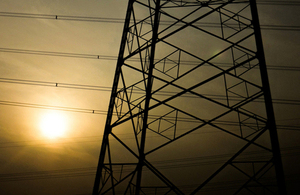NIE determination lowers bills for customers
The Competition and Markets Authority has published the Competition Commission’s final determination on Northern Ireland Electricity Ltd’s price control conditions.

The estimated effect of the determination, which involves a major redesign of the previous price control conditions, will be that a domestic customer’s annual bill will be reduced by approximately £10 (before adjustments for inflation) by the end of the new price control period in September 2017.
The Competition Commission’s (CC’s) determination also requires Northern Ireland Electricity (NIE) to refund customers to compensate for any over-recovery of charges resulting from the extension of the previous price control (which was originally due to finish in March 2012 but has been continued due to delays in implementing the new price control).
The Competition and Markets Authority (CMA) has today published the determination, which was submitted to the Northern Ireland Authority for Utility Regulation (UR) by the CC on 26 March 2014 prior to it becoming part of the CMA (see notes to editors). The UR referred the case to the CC in April 2013, following NIE’s decision to reject the UR’s price control determination covering the period from January 2013 to September 2017.
NIE is the owner of the electricity transmission and distribution infrastructure in Northern Ireland. These activities typically account for 20% to 25% of domestic customers’ bills. The UR controls charges for transmission and distribution by setting the maximum regulated revenues that NIE is allowed to raise during the following price control period.
The CC was required to determine whether NIE’s current price control conditions operate or may be expected to operate against the public interest and if so, set a new revenue control for NIE and otherwise modify NIE’s licence conditions. In considering the public interest, the CC had to balance the interests of customers in keeping bills down with giving the licence holder (NIE) the ability to fund the investment necessary to maintain the reliability of supply.
The CC found that a number of elements of the price control conditions applying from 2007 now operate against the public interest and has therefore specified widespread modifications to the conditions and set a new amount for NIE’s maximum regulated revenue over the original price control period (from April 2012 to September 2017). The CC has also included further conditions to improve the reporting and monitoring of information to the UR.
The CC’s determination of NIE’s maximum regulated revenue allows it 6.42% less revenue than was allowed in the UR’s Final Determination. The CC also stated that the NIE’s weighted average cost of capital should be 4.1%. The new price control conditions will apply from October 2014 until September 2017.
Professor Martin Cave, Chairman of the Inquiry Group and CMA Panel Deputy Chair, said:
We think we’ve struck the right balance between keeping bills down for customers and allowing for the investment necessary to maintain and improve the network. Not only will customer bills fall as a result of our determination but they should also receive a refund as a result of the readjusted charges.
We’ve undertaken a major redesign of NIE’s price control conditions and the new model will provide much greater incentives for the company to avoid unnecessary expenditure and to invest efficiently. In assessing NIE’s proposals for investment projects critically, we have looked at many individual spending decisions. We’ve approved funding for more investment projects than in the UR’s proposed determination and have also set a new allowed rate of return on NIE’s investments. This rate is lower than past price controls and accounts for a large part of the reason why the maximum regulated revenues are lower than in the UR’s determination.
We believe the new price control will give NIE better incentives to be more efficient whilst investing in the network, which will ultimately benefit customers, and also provide a robust framework for future price controls and regulation.
The full determination and all other information relating to the determination can be found here.
Notes for editors
- The CMA is the UK’s primary competition and consumer authority. It is an independent non-ministerial government department with responsibility for carrying out investigations into mergers, markets and the regulated industries and enforcing competition and consumer law. From 1 April 2014 it took over the functions of the CC and the competition and certain consumer functions of the Office of Fair Trading (OFT), as amended by the Enterprise and Regulatory Reform Act 2013.
- On 26 March the CC submitted its final determination (including appendices) in the NIE price control inquiry to the UR in accordance with Article 16(4) of the Electricity (Northern Ireland) Order 1992 (the Order). Pursuant to Article 16(5) of the Order, the UR shall send the CC’s report to the licence holder (NIE) and the Department of Enterprise, Trade and Investment Northern Ireland (DETI), and then publish the report, after allowing DETI no less than 14 days to make any necessary redactions.
- The Electricity (Northern Ireland) Order 1992 allows the UR to refer any disputed licence modifications to the CC for determination.
- The CC used RPI as a measure of inflation as this was used in the current price control conditions.
- The members of the NIE Inquiry Group are: Martin Cave (Chair and CMA Panel Deputy Chair), Sarah Chambers, Michael Hutchings and Bob Spedding
Photo above by Simonair Chiu on Flikr. Used under Creative Commons, photo resized.